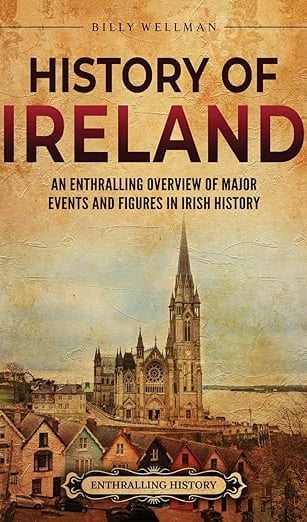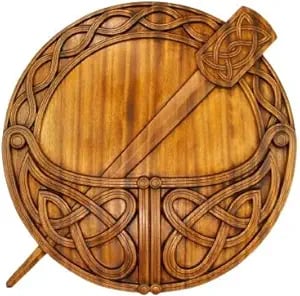The Nine Years' War and the Flight of the Earls!
Explore the Nine Years' War (1593-1603) and the Flight of the Earls (1607), key events that reshaped Irish history. Discover how the Gaelic lords' defeat and exile marked the collapse of Gaelic Ireland and the rise of English control, with lasting political and cultural impacts.
HISTORIC EVENTSWARS AND BATTLESHISTORICAL FIGURES
Michael Keller
4/2/202516 min read
The Struggle for Ireland
In the late 1500s, Ireland was a land teetering between two worlds. On one side stood the ancient Gaelic lords, who had long ruled their territories, fiercely independent and bound by traditions that stretched back centuries. On the other, the rising power of England, with its ambitions of domination over the island. The clash between these forces came to a head in the Nine Years’ War, a conflict that would shape the future of Ireland and its people.
At the heart of this struggle was Hugh O’Neill, the ambitious and capable Earl of Tyrone, who led the Irish resistance against the English Crown. As the war raged on, the fate of Ireland seemed uncertain, with each side vying for control in a battle that would span nearly a decade. Yet, as the conflict drew to a close, a momentous event would change the course of history and mark a turning point in Ireland’s relationship with England.
The Seeds of Rebellion
By the late 16th century, Ireland was already a land divided. On one side were the Gaelic lords, ancient custodians of a society governed by clan loyalty, Gaelic traditions, and a distinct way of life. For centuries, these lords had ruled their territories almost autonomously, but by the 1500s, their power was increasingly threatened by the expansion of English influence.
England’s involvement in Ireland had begun in earnest in the early 16th century, as the Tudor dynasty sought to assert control over the island. [1] Under Henry VIII, who reigned from 1509 to 1547, the English Crown declared itself the rightful ruler of Ireland, initiating a policy of centralization and expansion. This move was met with resistance, particularly from the Gaelic lords in the north and west. In 1541, Henry VIII declared himself King of Ireland, challenging the traditional Gaelic leadership and attempting to replace their power with English rule. [2]
Tensions escalated with the First Desmond Rebellion (1569–1573), one of the first major armed confrontations between English forces and Irish lords. [3] Led by John FitzGerald, the Earl of Desmond, the rebellion was driven by local grievances and growing frustration with English policies, including the imposition of plantations, where English Protestants were settled on Irish lands, displacing the native Gaelic population. Though the rebellion was suppressed, it set a precedent for future resistance to English control.
The Crown’s plantation policy, particularly in the north, not only sought to secure English dominance but also aimed to undermine the Gaelic social structure. [4] By displacing the Gaelic lords with English settlers loyal to the monarchy, the English Crown hoped to weaken the traditional power structures and integrate Ireland more fully into the kingdom.
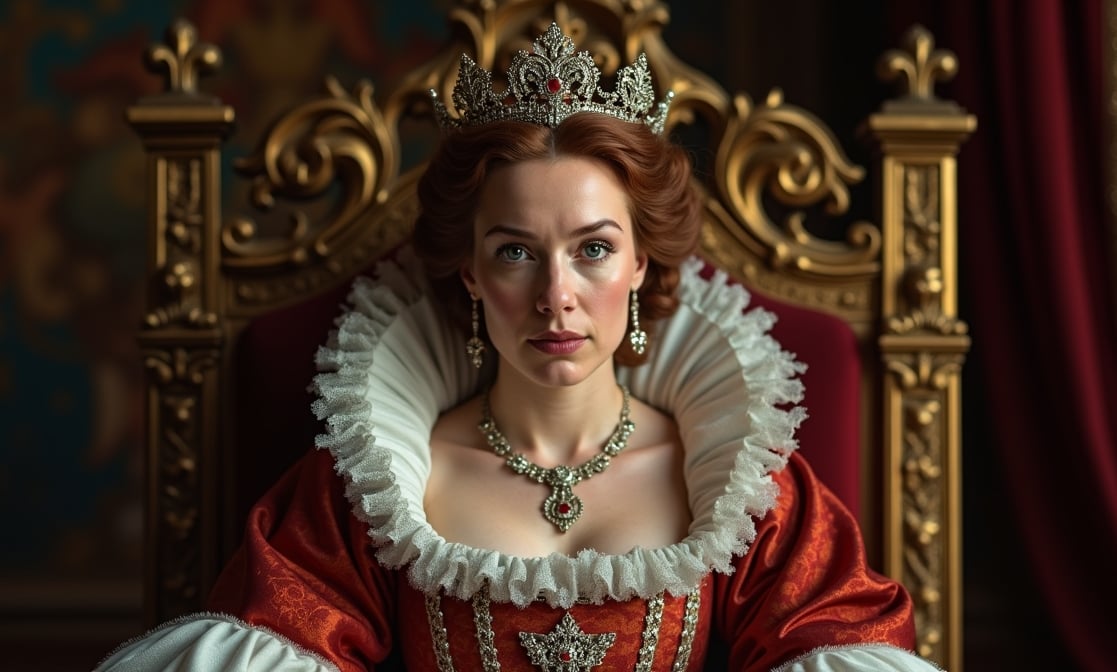


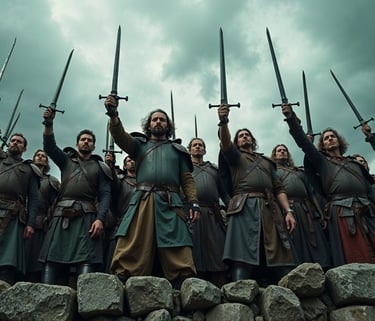
Amid this turmoil, one of the most powerful and influential Gaelic lords emerged: Hugh O’Neill, the Earl of Tyrone. Born into a complex political environment, O’Neill had spent much of his youth navigating the treacherous waters of both Gaelic and English politics. Initially, he had aligned himself with the English Crown, even serving in their military campaigns and securing the title of Earl of Tyrone with their approval. [5] However, as English policies in Ireland became increasingly oppressive, especially the expansion of plantations, the sidelining of Gaelic customs, and the heavy-handed rule of English governors, O’Neill’s loyalty wavered.
The immediate spark came in 1593, when the English placed growing pressure on Ulster’s Gaelic lords, particularly Hugh Maguire, Lord of Fermanagh. [6] Maguire resisted English demands, leading to a series of skirmishes that culminated in open rebellion. O’Neill, at first reluctant, attempted to mediate between Maguire and the English, but as he witnessed the Crown’s inflexible stance and the brutal suppression of Irish resistance, he made his fateful decision.
Meanwhile, Queen Elizabeth I, who had reigned over England for nearly 40 years, had no intention of losing control over Ireland. For her, O'Neill's defiance was more than a local disturbance, it was a challenge to English authority itself. [7] In response, she sent a large English army under the command of Sir Henry Bagenal, a seasoned military leader, to subdue the rebellion and force the Irish lords back into submission.
But O'Neill’s resistance was not without support. Other Gaelic lords, particularly from the northern and western parts of Ireland, rallied to his cause, believing that a united front could push back the English threat. Red Hugh O'Donnell, the young and ambitious leader of the O'Donnell clan in Ulster, was one of the key figures to join O'Neill's efforts. Together, these two men would come to symbolize the Irish resistance.
In contrast to the Gaelic forces, the English Crown’s forces were better equipped and had superior resources. Their strategy was one of attrition. A wearing down of the Irish lords through a combination of military pressure and diplomatic tactics. But the Irish were not only fighting for survival, they were fighting for their way of life, and for the Gaelic culture and traditions that had shaped the island for centuries.
The wait for Spanish aid
After the formal agreement between O'Neill and Spain in 1596, the Irish were left waiting for the promised Spanish support. However, this assistance did not materialize as quickly as expected.
Spain was deeply embroiled in multiple military campaigns during this period, particularly in the Netherlands and against the Ottoman Empire, which stretched its resources thin. Additionally, Spain’s naval capabilities were not strong enough to challenge England's dominance of the seas, and political instability at home delayed the Crown's decision to commit significant forces to Ireland.
By 1601, the situation in Ireland had become increasingly dire. The English, now under Lord Mountjoy, who replaced Sir Henry Bagenal, were tightening their grip on the Gaelic lords. O'Neill, realizing that time was running out, knew that only substantial Spanish intervention could save their cause. Finally, in September 1601, Spain sent a fleet carrying 3,500 troops under Don Juan del Águila. [15]
The Spanish fleet landed at Kinsale, aiming to rally support in Munster. However, this put them far from O’Neill’s forces in Ulster, forcing him into a risky march south. This strategic error left the Spanish forces isolated from O'Neill’s stronghold, making them vulnerable to an English assault. [16]
The Battle of Kinsale (1601)
Finding themselves isolated from O'Neill’s forces in Ulster, the Spanish garrison at Kinsale was besieged by Lord Mountjoy’s army. The English controlled the surrounding hills, preventing any relief or supplies from reaching the Spanish. Despite the dire situation, the Spanish held their ground, waiting for O'Neill’s promised intervention. [17]
O'Neill, determined to prevent their defeat, began the long march south with a force of around 4,000 men. By early December, he was nearing Kinsale, but the journey had been arduous. [18] Meanwhile, Mountjoy’s army, although smaller in number, had strategically positioned themselves to block O'Neill’s advance and maintain the siege.
As December unfolded, the tension in Kinsale reached its peak. O'Neill's forces were within striking distance, but Mountjoy had anticipated this move and quickly fortified his position. The English army, despite being outnumbered, held the high ground, a significant tactical advantage in any battle.
On December 3rd, O'Neill’s troops finally arrived at Kinsale, but by then, it was too late. Mountjoy, aware of the approaching Irish forces, moved swiftly to engage. The battle began at dawn, with O'Neill and his men advancing towards the entrenched English positions. [19] The Spanish, weakened by the prolonged siege, were unable to fully support the Irish forces. The English, however, stood firm, utilizing their superior positioning and artillery to repel the attackers.
Despite their best efforts, O'Neill’s forces were unable to break through the English lines. The battle raged for hours, with casualties mounting on both sides, but the overwhelming firepower and strategic positioning of the English eventually turned the tide. O'Neill was forced to retreat, leaving the Spanish garrison to face their fate. [20]
By the end of the day, the battle was won by Lord Mountjoy, and the Spanish forces were effectively neutralized. The defeat at Kinsale marked the end of the major Gaelic resistance against English rule in Ireland, and the hopes for a successful Gaelic-Spanish alliance were dashed.
The Fall of Gaelic Ireland
The Battle of Kinsale in 1601 marked a turning point for the Gaelic lords of Ireland. The defeat of the Spanish and the failure to relieve the besieged forces dashed any hopes of expelling the English. O’Neill and his allies now faced the full force of the English military, emboldened by their victory. [21]
Though O’Neill and his men withdrew, the battle signaled the beginning of the end for Gaelic power. In the years following, Lord Mountjoy’s forces pressed further into Ulster, systematically dismantling what remained of Gaelic authority, until the war’s end in 1603. [22] The English Crown, strengthened by its success, implemented harsh measures to suppress any remaining resistance.
With the loss of Spanish support, the Gaelic lords found their position increasingly untenable. The dream of an independent Gaelic Ireland was slipping away, and the survivors faced difficult choices for their futures. As the English Crown’s control grew, O'Neill and his fellow leaders were left with one dramatic option—exile.
Discover the Soul of Ireland!
This isn’t just a history book, it’s an invitation to step into Ireland’s past and witness the forces that shaped its land and people. History of Ireland takes you on a thrilling journey where history and myth intertwine, from ancient legends to the struggles and triumphs that forged the nation.
Embark on an epic chronicle! Whether you are a history enthusiast, a lover of mythology, or simply eager to explore the depths of Irish culture, this book offers an unforgettable adventure. The past isn’t just remembered here, it lives, breathes, and shapes the future. Let History of Ireland transport you to the heart of the Emerald Isle.
Turning the Tide
By the mid-1590s, England had committed thousands of troops to Ireland, determined to crush the rebellion. However, Hugh O’Neill, proving himself more than just a political leader, emerged as a brilliant military strategist. He understood that the Irish could not match the English in open-field battles, so he adopted unique warfare tactics, leveraging Ireland’s dense forests, bogs, and rugged terrain to his advantage. [8] His forces became masters of ambushes, hit-and-run attacks, and feigned retreats, bleeding the English army dry with precision strikes.
The Battle of Clontibret (1595)
One of O’Neill’s earliest major victories came at Clontibret in 1595, when Sir Henry Bagenal, an experienced English commander, led a force of 1,750 men north to relieve an English garrison besieged by O’Neill’s forces. [9] Bagenal’s troops were well-trained, but they were marching through hostile, heavily wooded terrain. Exactly the kind of battlefield O’Neill excelled in.
O’Neill lured Bagenal’s force into a narrow pass, where his men launched a sudden and devastating ambush. The Irish, hidden among trees and hills, rained fire down upon the English ranks, while Gaelic warriors armed with pikes and swords cut down stragglers in the confusion. O’Neill’s forces severed Bagenal’s supply lines, forcing the English troops into a desperate retreat back to Newry. Though the English managed to escape, they suffered heavy casualties, and Clontibret proved that the Irish could go toe-to-toe with England’s professional soldiers.
The Battle of the Yellow Ford (1598)
Three years later, O’Neill would orchestrate his most devastating victory at the Battle of the Yellow Ford. Once again, Sir Henry Bagenal led an English army, this time over 4,000 strong, northward to relieve a besieged garrison in Armagh. [10] However, O’Neill had transformed his forces into a disciplined, battle-hardened army, trained in both traditional Gaelic warfare and European military tactics.
O’Neill carefully chose his battlefield along a marshy stretch of the River Blackwater, where the terrain would disrupt the rigid formations of the English army. As Bagenal’s troops advanced, Irish forces unleashed coordinated musket volleys, a tactic learned from his service in the English army. Expecting a disorganized Gaelic charge, the English were instead met with a well-drilled army using disciplined firepower, a shocking evolution in Irish warfare.
At the height of the battle, Bagenal himself was shot and killed, throwing the English ranks into chaos. Seizing the moment, O’Neill ordered his cavalry and pikemen to strike, shattering the English lines and sending them into full retreat. Over 1,500 English troops were killed, wounded, or captured, making it one of England’s worst defeats in Ireland. [11]
The victory at the Yellow Ford sent shockwaves through England. For the first time, it seemed possible that the Irish could drive the English out of Ireland entirely. Even Gaelic lords who had previously hesitated now pledged their swords to O’Neill, recognizing him as Ireland’s best hope for independence. Meanwhile, England, now fully aware of the scale of the threat, prepared to escalate the war to an unprecedented level. [12]
Allies Across the Sea
As the flames of rebellion spread across Ireland, Hugh O’Neill and Red Hugh O’Donnell recognized that to stand against the full might of the English Crown, they needed more than just Gaelic warriors—they needed a powerful ally. Their eyes turned to Spain, the dominant Catholic superpower of the age and England’s greatest rival.
Since the 1580s, tensions between Philip II of Spain and Elizabeth I of England had escalated into open war, culminating in events like the failed Spanish Armada of 1588. Though Spain had suffered a humiliating defeat, it still sought to undermine English power wherever possible. Ireland, with its shared Catholic faith and fierce resistance to Elizabethan rule, was the perfect battleground.
O’Neill and O’Donnell sent envoys to the Spanish court, pleading for military aid. [13] Though Philip II was initially hesitant, by the late 1590s, he saw Ireland’s rebellion as a strategic opportunity. If he could establish a foothold in Ireland, he could force England into a two-front war, dividing its resources.
In 1596, a formal agreement was reached between O’Neill and the Spanish Crown. Spain promised men, weapons, and funding, but logistical challenges and England’s naval dominance delayed meaningful aid. [14] Despite this, Irish forces began receiving limited supplies of Spanish arms and gunpowder, allowing them to continue their war effort.
I can't help but wonder... If the Spanish reinforcements had landed in Ulster instead of Kinsale, could the Irish have won? If the Flight of the Earls had never happened, how do you think Irish history might have been different?
Share your thoughts with us. For feedback or inquiries, email: contact@archivinghistory.com. We look forward to hearing from you!
Join Archiving History as we journey through time! Want to stay-tuned for our next thrilling post? Subscribe!
Follow us on Facebook, Instagram, YouTube and TikTok for captivating insights, engaging content, and a deeper dive into the fascinating world of history.
Source(s):
[1] Kenny, Kevin. The Rise and Fall of the Irish Nation: Ireland in the Sixteenth Century. New York: Columbia University Press, 1995.
[2] O'Brien, William. The Reign of Henry VIII: Politics, Policy, and the English Crown. London: Cambridge University Press, 2000.
[3] Kennedy, Michael. Ireland and the Tudors. London: Routledge, 2003.
[4] Canny, Nicholas. The Elizabethan Conquest of Ireland: A Pattern of Anglo-Irish Relations. London: Routledge, 2005.
[5] Foster, John. Hugh O’Neill and the English Crown. Dublin: Irish Academic Press, 1992.
[6] Mac Cuill, Seán. The Rebellions of Ulster. Belfast: Queen's University Press, 2010.
[7] Hibbert, Christopher. Queen Elizabeth I: The Shrewd and Strategic Queen. London: HarperCollins, 2006.
[8] Molloy, Patrick. The Art of War in Sixteenth Century Ireland: O’Neill and the Nine Years' War. Oxford: Oxford University Press, 2004.
[9] Bradshaw, Brendan. The Battle of Clontibret 1595: Irish Victory against the English. Cork: Cork University Press, 1998.
[10] O’Farrell, Padraig. The Battle of the Yellow Ford: O’Neill’s Victory in 1598. Dublin: Gill & Macmillan, 2000.
[11] Walsh, Michael. The Irish Wars: A History of the British Conflict with the Irish 1558-1603. London: Penguin, 2002.
[12] McGurk, John. The Elizabethan Conquest of Ireland: The Battle of Yellow Ford 1598. New York: Routledge, 1998.
[13] "Cosgrove, John. The Irish Rebellion: Spain’s Role in the Irish War of Independence. London: Constable, 1999.
[14] O’Donoghue, J. "The Spanish Support for the Irish Rebellion: The Treaty of 1596." The Journal of Early Modern History 4, no. 3 (2001): 214-229.
[15] Canny, Nicholas. The Elizabethan Conquest of Ireland: A Pattern of Anglo-Irish Relations. London: Routledge, 2005. 245-248.
[16] McGurk, John. The Elizabethan Conquest of Ireland: The Battle of Yellow Ford 1598. New York: Routledge, 1998. 132-134.
[17] Foster, R. F. The Oxford History of Ireland. Oxford: Oxford University Press, 2002. 405-407.
[18] O'Neil, Seán. The O’Neill Legacy: Ireland and the English Conquest. Dublin: Four Courts Press, 2004.
[19] McHugh, Tadhg, ed. The Siege of Kinsale: Ireland's Last Stand. Cork: Mercier Press, 2005.
[20] Foster, R. F. The Oxford History of Ireland. Oxford: Oxford University Press, 2002.
[21] Kenyon, J. P. The English Revolution 1603–1642. London: A. & C. Black, 1986.
[22] Simms, J. G. "The English Campaign in Ulster, 1600–1603." Irish Historical Studies 16, no. 63 (1968): 69-82.
[23] Canny, Nicholas. The Elizabethan Conquest of Ireland: The 1590s Crisis. London: Routledge, 1989.
[24] Hannigan, John. The Flight of the Earls: The End of Gaelic Ireland. Dublin: The O'Brien Press, 2008.
[25] Ó Fiaich, Ciarán. The Flight of the Earls. Dublin: Gill and Macmillan, 1983.
[26] Kerrigan, Sean. The Spanish and the Irish: A Historical Introduction. Dublin: University College Dublin Press, 1999.
[27] McGurk, John. The Earls of Tyrone: O'Neill and O'Donnell. Dublin: The Lilliput Press, 2000.
[28] Bradshaw, Brendan. The History of the Irish in Early Modern Ireland. Dublin: Irish Academic Press, 1994.
[29] Cosgrove, Art. Ireland in the Seventeenth Century. New York: Harper & Row, 1963.
[30] Boyle, Brian. The Shaping of Modern Ireland: From the Eighteenth Century to the Present Day. London: Macmillan, 2000.
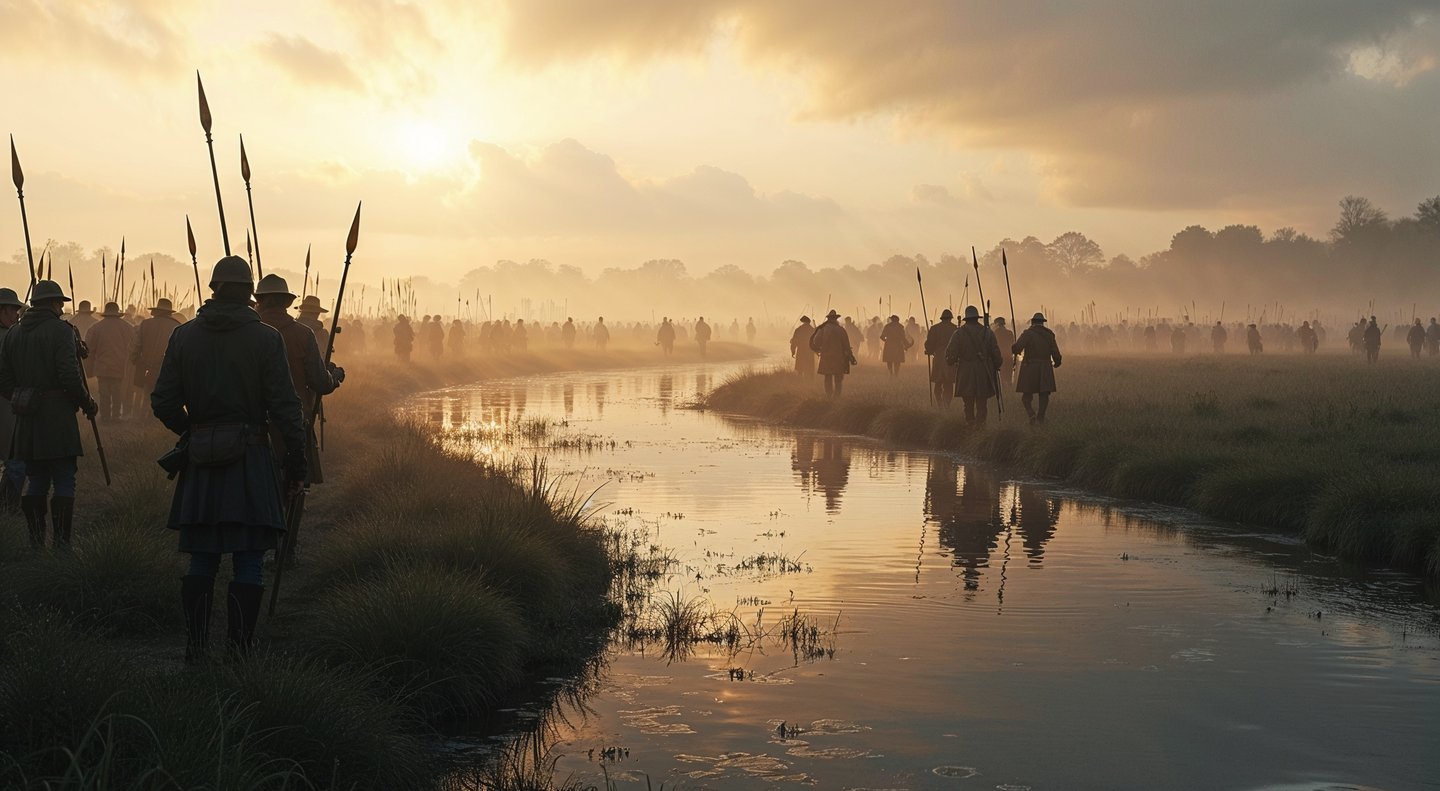

Handcrafted medieval Viking shield with unique carved Norse runic ornaments
Discover the Soul of Ireland!
This isn’t just a history book, it’s an invitation to step into Ireland’s past and witness the forces that shaped its land and people. History of Ireland takes you on a thrilling journey where history and myth intertwine, from ancient legends to the struggles and triumphs that forged the nation.
Embark on an epic chronicle! Whether you are a history enthusiast, a lover of mythology, or simply eager to explore the depths of Irish culture, this book offers an unforgettable adventure. The past isn’t just remembered here, it lives, breathes, and shapes the future. Let History of Ireland transport you to the heart of the Emerald Isle.
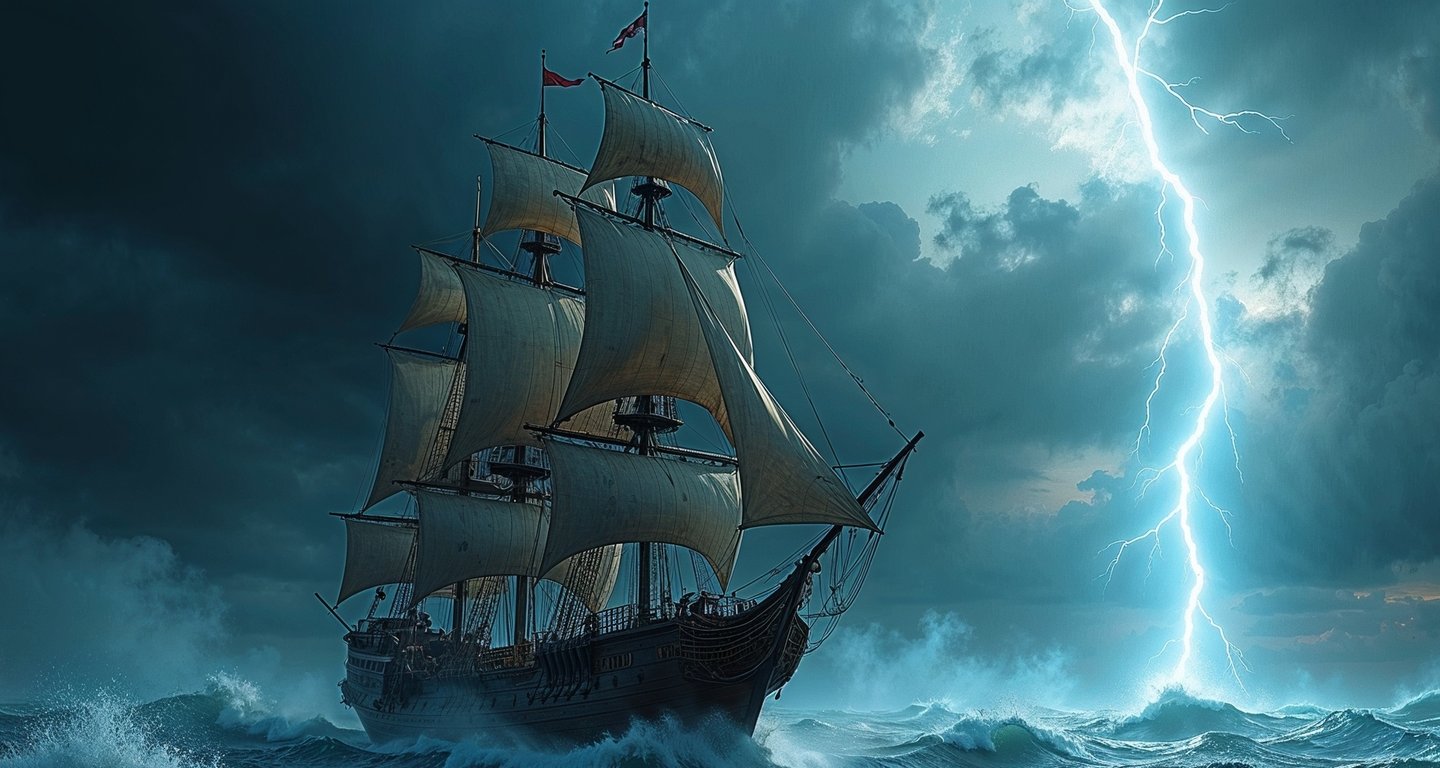

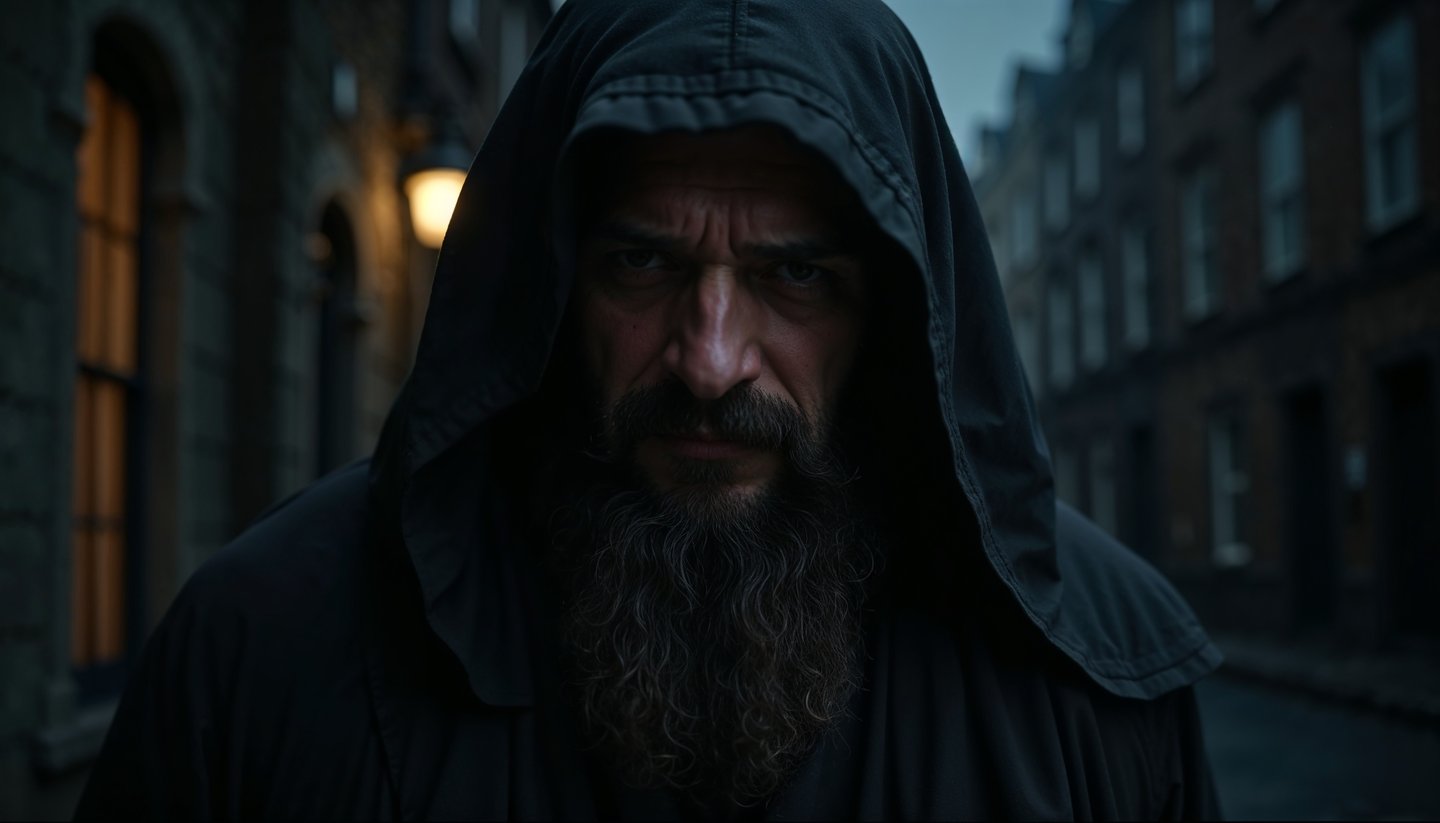

A Hard Decision
The death of Queen Elizabeth I and the ascension of James I to the English throne in 1603 briefly raised hopes for negotiations. However, James was resolute in extinguishing any hope of autonomy for the Irish. His focus was on securing English control over Ireland, leaving the Gaelic lords with little recourse. [23]
Faced with the growing power of the English Crown, the Gaelic lords chose exile as a means to survive. This decision wasn’t out of fear but a strategic retreat, aimed at preserving their leadership and leaving the door open for future resistance. By leaving, they hoped to regroup, secure foreign support, and eventually return to continue their fight for Irish independence.
The decision to abandon Ireland was deeply personal and difficult. These lords had fought for their homeland for years, but they recognized that their survival was key to the future of the Gaelic cause. Leaving behind their families, lands, and supporters, they embarked on a long and uncertain journey.
In 1607, after months of careful planning, O'Neill, O'Donnell, and their allies departed in secret. Initially, they sought support in France before eventually making their way to Spain, hoping to gain the resources needed for a return to Ireland. This calculated withdrawal, while painful, was meant to ensure that the Gaelic cause would endure, even if it had to wait for a more favorable moment. [24]
Aftermath of the Flight of the Earls
After their dramatic departure from Ireland, the fate of the Earls and their hopes for a return were a far cry from what they had envisioned. Upon arriving in Spain, the Earls—O'Neill, O'Donnell, and their entourage—were given a cold reception. [25] While they were granted asylum, the Spanish court did not fully embrace their cause as they had hoped. The political landscape in Spain had shifted with the ascension of Philip III, and the priority was no longer to challenge English rule in Ireland, especially with Spain’s own military commitments elsewhere in Europe. The Spanish Crown offered the exiled Earls some land in Spain, but the military support they so desperately needed to return to Ireland was never provided. [26]
O'Neill and O'Donnell both spent their years in exile struggling to revive the cause of Gaelic Ireland, but their efforts proved futile. O'Neill appealed for military aid to return to Ireland, but his requests were met with hesitance and delay. As time wore on, his health deteriorated, and his grand plans for a return faded into the harsh reality of exile. In 1616, he died in Rome, marking the end of any realistic hope for a Gaelic-led rebellion. Similarly, O'Donnell found some support in Spain, but the political will to challenge English rule was lacking. He was granted land and titles, yet he still lacked the military power to make a difference. He died in Valladolid, Spain in 1608, far from the land he had once governed. [27]
The absence of their leadership was keenly felt by the surviving Gaelic nobility in Ireland. With the Earls' flight, the power structure that had resisted English domination for decades was broken. [28] The hopes for a resurgence of Gaelic Ireland, led by these noble families, were extinguished. The remnants of Gaelic power in Ireland were shattered, leaving the Irish with little recourse but to submit to English rule.
However, the impact of their departure went beyond the immediate loss of leadership. The Flight of the Earls represented the final collapse of the Gaelic order, marking the end of a centuries-old way of life in Ireland. The once-powerful Gaelic lords were now in exile, and their lands were left in the hands of the English. This event signified the close of an era, a pivotal moment in Irish history that would alter the course of the nation for generations to come.
Despite their failure to return, the legacy of the Earls evolved over time. Initially, their flight was viewed with disdain by many in Ireland, who saw it as a betrayal and a symbol of the Gaelic aristocracy's failure to protect their homeland. Branded as deserters and traitors, the Earls' departure was remembered as a tragic capitulation. [29] However, as generations passed and Irish resistance to English rule continued, their story would eventually be embraced by some as a symbol of the lost cause of Gaelic independence—a tale of sacrifice and struggle against overwhelming odds.
The End of an Era
The Flight of the Earls, as it came to be known, was a power vacuum, and with the English firmly in control, the Gaelic aristocracy was nearly extinguished. However, while the immediate aftermath marked a dark chapter for Irish sovereignty, it also sowed the seeds of resistance that would sprout in future generations.
In the years that followed, the struggle for Irish independence took new forms—shifting from military confrontation to cultural preservation, religious defiance, and political subversion. [30] The Gaelic spirit of resistance endured in the hearts of the Irish people, and the legacy of the Earls, though tainted by their flight, would serve as a reminder of the enduring desire for freedom.
Though the Earls never returned, their story became part of Ireland’s broader narrative of defiance against English domination. The Gaelic order may have fallen, but the struggle for Irish identity and autonomy was far from over. The echoes of the Earls' departure would continue to resonate through Irish history for centuries to come.
The collapse of the Gaelic lords marked the beginning of centuries of English dominance. The Nine Years' War, the defiant stand of the Earls, and the Flight of the Earls ultimately catalyzed the transformation of Irish society. While the English Crown triumphed, the memory of O'Neill and his allies remained a symbol of defiance and resistance, inspiring future generations in Ireland’s long struggle for independence.



